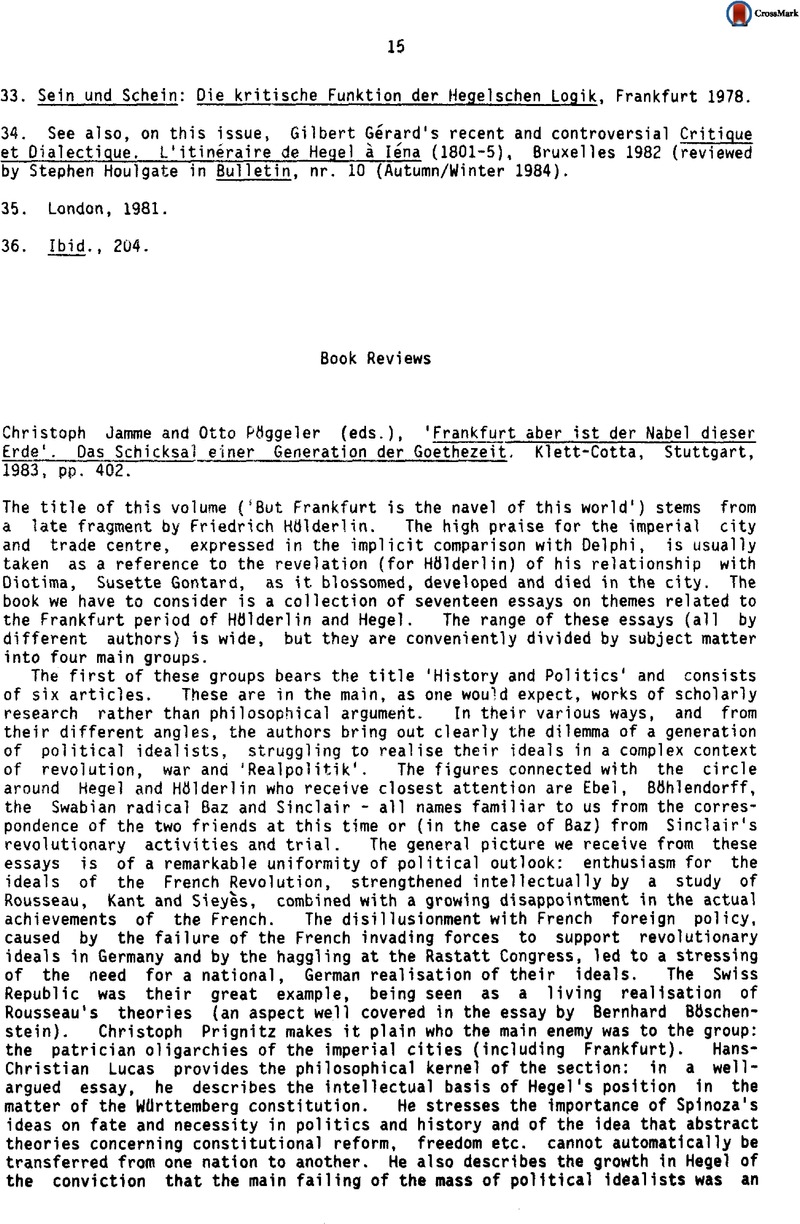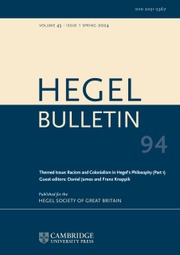No CrossRef data available.
Article contents
Christoph Jamme and Otto Pöggeler (eds.), ‘Frankfurt aber ist der Nabel dieser Erde’. Das Schicksal einer Generation der Goethezeit. Klett-Cotta, Stuttgart, 1983, pp. 402.
Review products
Published online by Cambridge University Press: 23 June 2015
Abstract

- Type
- Book Reviews
- Information
- Bulletin of the Hegel Society of Great Britain , Volume 6 , Issue 1: number 11 , Spring/Summer 1985 , pp. 15 - 18
- Copyright
- Copyright © The Hegel Society of Great Britain 1985
References
Notes
1. For Hölderlin's knowledge of the Presocratics, see Hölscher, Uvo, Empedokles und Höliderlin (Frankfurt a.M., 1965)Google Scholar; his interest in Spinoza is well documented in his letters, in particular No. 41 in the Stuttgart edition, written to his mother early in 1791, and No. 94, written to Hegel from Jena in January 1795, in which he describes how he first read Fichte ‘immediately after reading Spinoza’. (Grosse Stuttgarter Ausgabe 6/1, pp. 63-4, p. 156).
2. This edition received rather disastrous reviews in the Hölderlin-Jahrbuch 1975-77, due to faults in the scholarship. This is, however, no reason to reject all the editor's insights a priori.
3. See my separate review of this volume below.
4. Hegel im Kontext (Frankfurt a.M., 1971), p. 24ff.Google Scholar
5. Isaak von Sinclair zwischen Fichte, Hölderlin und Hegel (Frankfurt a.M.), p. 68ff.Google Scholar




